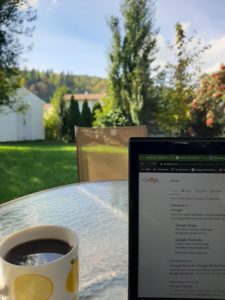I found the keynote speaker at our indigenous day of learning enlightening. Dr. Dustin Louie showed his passion about reconciliation, de-colonialization and indigenization. He gave the audience a very structured approach to what teacher can do to apply this to their classroom. Dr. Louie explained that we need to start with de-colonializing, which involve 3 main ways we need to reshape our mindset and our educational system.
First of, we must let the indigenous people shape their own identity and share it with the world. Currently, the picture of “what it means to be indigenous” has been shaped by colonials, and that affects the ways that indigenous people see themselves. So, to decolonialize we need to allow Indigenous people to rediscover and define their authentic identity. Secondly, we need to break down the white supremacy built into our society. This idea he explained is that every system, including the education system has been built to benefit white people. So, to try and produce equality in an unequal system is not going to work. Therefore, we need to start breaking down these supremist structure and bring in other perspectives to make it an equal playing field. Lastly, he explained, to do these two things we need to first get rid of the idea of western neutrality. Western neutrality is a concept of western methods are the best way of doing and that it benefits everyone. For example, if we are using Western neutrality, and someone presents a new perspective, it won’t be heard since anything different is viewed as wrong, too much work, or just not how thins are done. So, we need to do a lot of cognitive work to interrupt biases and truly listen and see the value in other viewpoints.
I found these three ways to approach de-colonializing important to understand going forward in the teaching program, because we have to understand that these three embarrassing cognitive processes have been built into us (being part of the people raised with western/colonial views), and actively work against it. The hardest part is going to be recognizing the unconscious biases that we will find yourself sinking into because it is “easier”. So, what we must do is introspection and really question the purpose of our education system, lessons, assignments, and think if there is another way of doing this. I think at this point is when we can do something meaningful and start working towards de-colonizing.
One idea that Dr. Louie mentioned that I hope to apply to my teaching practicums is that non-aboriginal teachers and teacher candidates don’t have to be scared to teach indigenous knowledge for fear of doing something wrong. He recommended building relationships and approaching it with humility. And if you make a mistake, then apologize and make a mend. We are all human and all make mistakes. But being too scared to teach the content isn’t going to get us anywhere.


